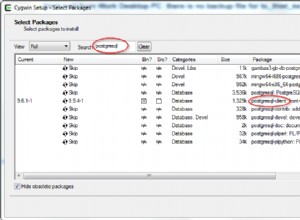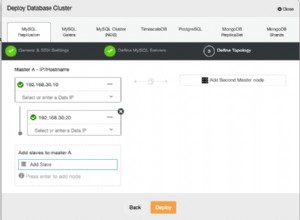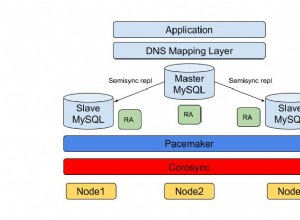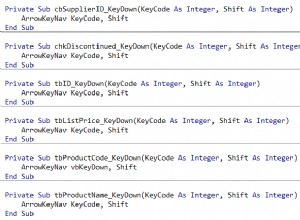Per quanto ne so, non ce n'è. Scrivere uno è piuttosto semplice, però. Quanto segue ti dà l'alfa e la pendenza beta costanti per y =Alpha + Beta * x + epsilon:
-- test data (GroupIDs 1, 2 normal regressions, 3, 4 = no variance)
WITH some_table(GroupID, x, y) AS
( SELECT 1, 1, 1 UNION SELECT 1, 2, 2 UNION SELECT 1, 3, 1.3
UNION SELECT 1, 4, 3.75 UNION SELECT 1, 5, 2.25 UNION SELECT 2, 95, 85
UNION SELECT 2, 85, 95 UNION SELECT 2, 80, 70 UNION SELECT 2, 70, 65
UNION SELECT 2, 60, 70 UNION SELECT 3, 1, 2 UNION SELECT 3, 1, 3
UNION SELECT 4, 1, 2 UNION SELECT 4, 2, 2),
-- linear regression query
/*WITH*/ mean_estimates AS
( SELECT GroupID
,AVG(x * 1.) AS xmean
,AVG(y * 1.) AS ymean
FROM some_table
GROUP BY GroupID
),
stdev_estimates AS
( SELECT pd.GroupID
-- T-SQL STDEV() implementation is not numerically stable
,CASE SUM(SQUARE(x - xmean)) WHEN 0 THEN 1
ELSE SQRT(SUM(SQUARE(x - xmean)) / (COUNT(*) - 1)) END AS xstdev
, SQRT(SUM(SQUARE(y - ymean)) / (COUNT(*) - 1)) AS ystdev
FROM some_table pd
INNER JOIN mean_estimates pm ON pm.GroupID = pd.GroupID
GROUP BY pd.GroupID, pm.xmean, pm.ymean
),
standardized_data AS -- increases numerical stability
( SELECT pd.GroupID
,(x - xmean) / xstdev AS xstd
,CASE ystdev WHEN 0 THEN 0 ELSE (y - ymean) / ystdev END AS ystd
FROM some_table pd
INNER JOIN stdev_estimates ps ON ps.GroupID = pd.GroupID
INNER JOIN mean_estimates pm ON pm.GroupID = pd.GroupID
),
standardized_beta_estimates AS
( SELECT GroupID
,CASE WHEN SUM(xstd * xstd) = 0 THEN 0
ELSE SUM(xstd * ystd) / (COUNT(*) - 1) END AS betastd
FROM standardized_data pd
GROUP BY GroupID
)
SELECT pb.GroupID
,ymean - xmean * betastd * ystdev / xstdev AS Alpha
,betastd * ystdev / xstdev AS Beta
FROM standardized_beta_estimates pb
INNER JOIN stdev_estimates ps ON ps.GroupID = pb.GroupID
INNER JOIN mean_estimates pm ON pm.GroupID = pb.GroupID
Qui GroupID viene utilizzato per mostrare come raggruppare in base a un valore nella tabella dei dati di origine. Se desideri solo le statistiche su tutti i dati nella tabella (non sottogruppi specifici), puoi eliminarle e unire. Ho usato il WITH affermazione per chiarezza. In alternativa, puoi utilizzare invece le sottoquery. Si prega di prestare attenzione alla precisione del tipo di dati utilizzato nelle tabelle poiché la stabilità numerica può deteriorarsi rapidamente se la precisione non è sufficientemente elevata rispetto ai dati.
MODIFICA: (in risposta alla domanda di Peter per ulteriori statistiche come R2 nei commenti)
Puoi facilmente calcolare statistiche aggiuntive usando la stessa tecnica. Ecco una versione con R2, correlazione e covarianza del campione:
-- test data (GroupIDs 1, 2 normal regressions, 3, 4 = no variance)
WITH some_table(GroupID, x, y) AS
( SELECT 1, 1, 1 UNION SELECT 1, 2, 2 UNION SELECT 1, 3, 1.3
UNION SELECT 1, 4, 3.75 UNION SELECT 1, 5, 2.25 UNION SELECT 2, 95, 85
UNION SELECT 2, 85, 95 UNION SELECT 2, 80, 70 UNION SELECT 2, 70, 65
UNION SELECT 2, 60, 70 UNION SELECT 3, 1, 2 UNION SELECT 3, 1, 3
UNION SELECT 4, 1, 2 UNION SELECT 4, 2, 2),
-- linear regression query
/*WITH*/ mean_estimates AS
( SELECT GroupID
,AVG(x * 1.) AS xmean
,AVG(y * 1.) AS ymean
FROM some_table pd
GROUP BY GroupID
),
stdev_estimates AS
( SELECT pd.GroupID
-- T-SQL STDEV() implementation is not numerically stable
,CASE SUM(SQUARE(x - xmean)) WHEN 0 THEN 1
ELSE SQRT(SUM(SQUARE(x - xmean)) / (COUNT(*) - 1)) END AS xstdev
, SQRT(SUM(SQUARE(y - ymean)) / (COUNT(*) - 1)) AS ystdev
FROM some_table pd
INNER JOIN mean_estimates pm ON pm.GroupID = pd.GroupID
GROUP BY pd.GroupID, pm.xmean, pm.ymean
),
standardized_data AS -- increases numerical stability
( SELECT pd.GroupID
,(x - xmean) / xstdev AS xstd
,CASE ystdev WHEN 0 THEN 0 ELSE (y - ymean) / ystdev END AS ystd
FROM some_table pd
INNER JOIN stdev_estimates ps ON ps.GroupID = pd.GroupID
INNER JOIN mean_estimates pm ON pm.GroupID = pd.GroupID
),
standardized_beta_estimates AS
( SELECT GroupID
,CASE WHEN SUM(xstd * xstd) = 0 THEN 0
ELSE SUM(xstd * ystd) / (COUNT(*) - 1) END AS betastd
FROM standardized_data
GROUP BY GroupID
)
SELECT pb.GroupID
,ymean - xmean * betastd * ystdev / xstdev AS Alpha
,betastd * ystdev / xstdev AS Beta
,CASE ystdev WHEN 0 THEN 1 ELSE betastd * betastd END AS R2
,betastd AS Correl
,betastd * xstdev * ystdev AS Covar
FROM standardized_beta_estimates pb
INNER JOIN stdev_estimates ps ON ps.GroupID = pb.GroupID
INNER JOIN mean_estimates pm ON pm.GroupID = pb.GroupID
MODIFICA 2 migliora la stabilità numerica standardizzando i dati (anziché solo centrando) e sostituendo STDEV a causa di problemi di stabilità numerica
. Per me, l'attuale implementazione sembra essere il miglior compromesso tra stabilità e complessità. Potrei migliorare la stabilità sostituendo la mia deviazione standard con un algoritmo online numericamente stabile, ma ciò complicherebbe notevolmente l'implementazione (e la rallenterebbe). Allo stesso modo, le implementazioni che utilizzano ad es. Kahan(-Babuška-Neumaier) compensi per la SUM e AVG sembrano funzionare leggermente meglio in test limitati, ma rendono la query molto più complessa. E finché non so come T-SQL implementi SUM e AVG (ad es. potrebbe già utilizzare la somma a coppie), non posso garantire che tali modifiche migliorino sempre la precisione.




